This Rare 1959 Sheraton Hails From Epiphone's Earliest Gibson Days
This high-quality vintage guitar bears hallmarks of Epiphone's earlier life as a premier American guitar maker

Any mention of the Epiphone brand today is likely to evoke thoughts of budget-friendly, overseas-made Gibson alternatives that have worn that badge for the past several decades. But the brand began as a seminal American guitar maker and one of the “big three” of the early archtop, alongside Gibson and Gretsch.
The subject shown here hails from the earliest days of Gibson’s ownership of Epiphone, a time when the maker’s own distinctive features were still prevalent throughout the design.
At first glance, this 1959 Epiphone Sheraton might look relatively familiar, yet a closer probe reveals a wealth of unusual details that hearken back to its glory days.
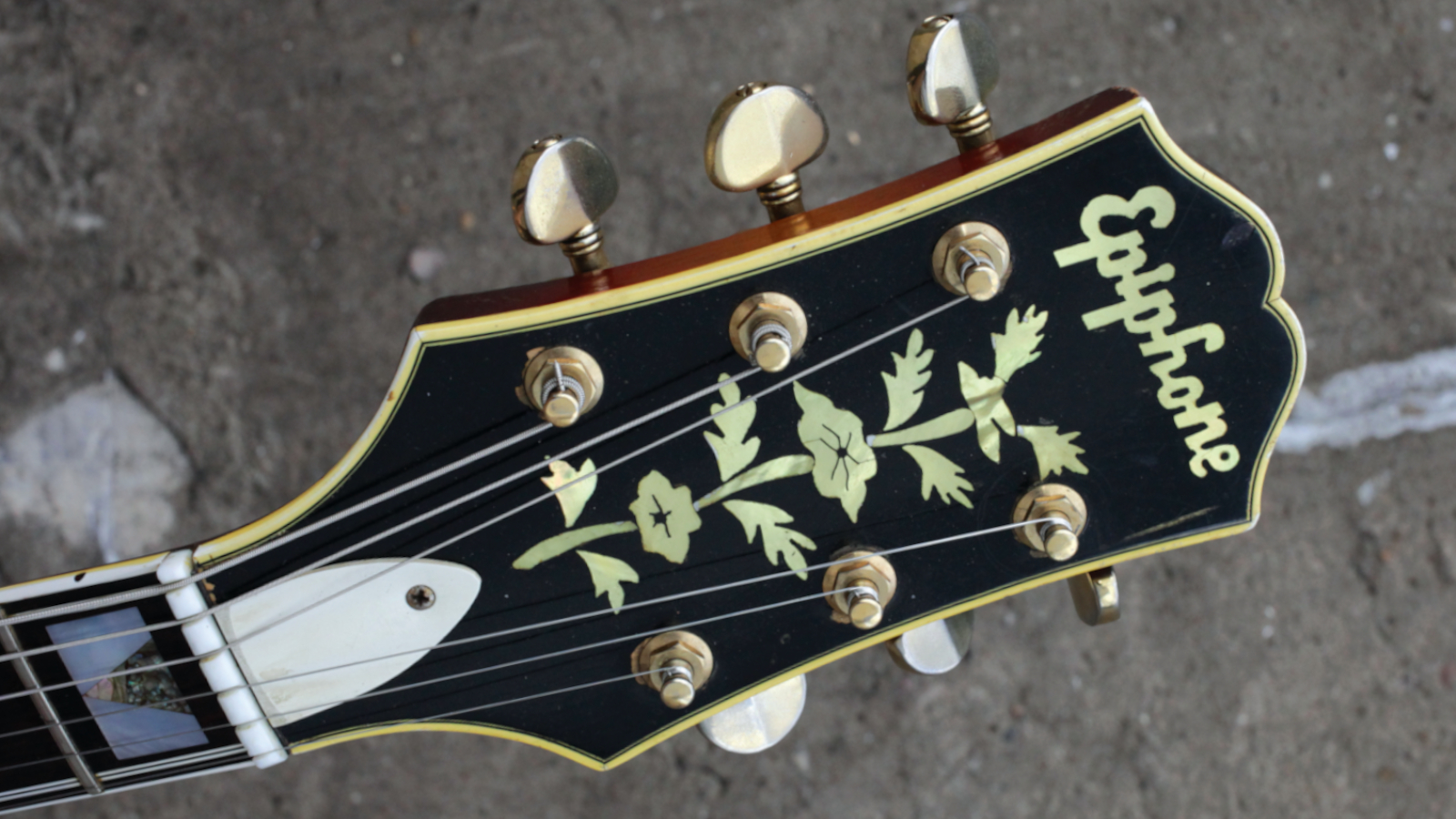
Only two decades earlier, Epiphone had been a premier brand serving the needs of volume-hungry jazz and dance-band guitarists with models that rivaled Gibson’s preeminent archtops. But the war years were hard on Epiphone, and the company had difficulty recovering after the 1943 death of its president and namesake, Epaminodas “Epi” Stathopoulo.
In the mid 1950s, Les Paul, who had originally developed his ideas for a solidbody electric guitar in the Epiphone workshops, suggested Gibson president Ted McCarty acquire the New York City-based company.
In 1957, McCarty struck a deal with Epi’s brother, Orphie, the majority shareholder, to purchase Epiphone for $20,000. Gibson moved Epiphone production to its factory in Kalamazoo, Michigan, where guitars carrying the brand name began rolling off the assembly line in 1958.
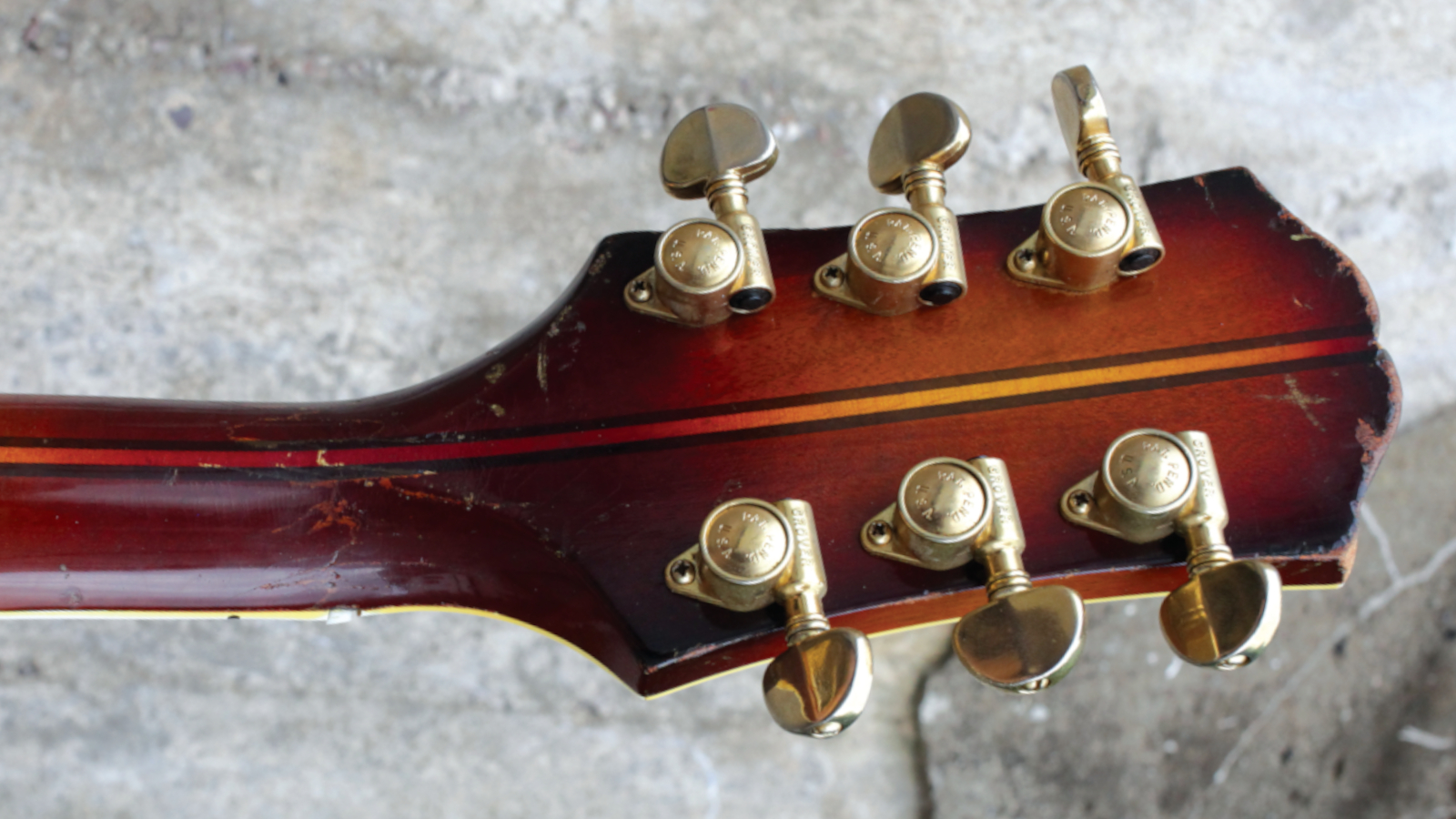
Although these used the woods and basic body shapes that the very same craftsmen were applying to Gibson models of the time, many Epiphones of the first few years of production were fitted entirely with parts brought from New York after the acquisition. Such is the case with this stunningly clean and original 1959 Sheraton, Epiphone’s top-of-the-line semi from the first year of its production.
All the latest guitar news, interviews, lessons, reviews, deals and more, direct to your inbox!
Even beyond the components, this ornate model bears the marks of Epiphone’s glory years. This Sheraton has the desirable short headstock that would be enlarged in 1964, adorned with a mother-of-pearl tree of life inlay that’s much like those seen on upscale models of the 1930s, like the full-bodied Emperor archtop.
Similarly, its ebony fretboard sports multi-ply purfling within the binding – something not even afforded Gibson’s top-of-the-line semi, the ES-355 – along with elegant split-V position markers, with wedges of abalone inlaid within the mother-of-pearl rectangles.
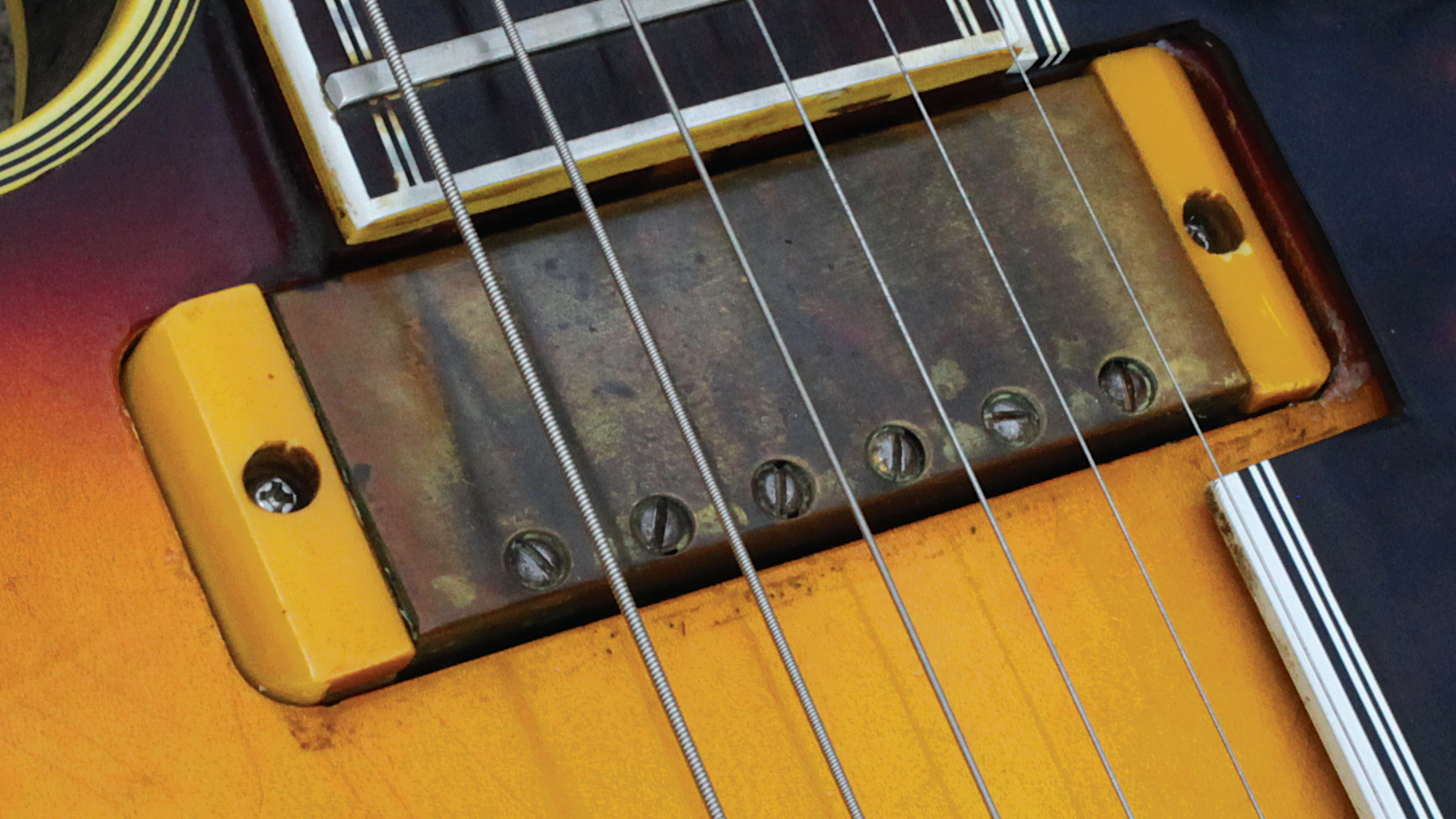
A look round the back shows us that the glued-in neck is itself a laminated five-piece construction, a feature found on none of Gibson’s semis of the era.
Although the Sheraton’s body was a sibling of Gibson’s new thinline semi-hollow ES range, its depth is a little shallower at the rims than some comparable ES-335s of the same year.
Apparently built in early ’59, this guitar’s top is also made with the thinner laminated maple Gibson was using on its pressed-archtop models up until around the end of 1958, considered by many to be livelier sounding than the laminated stocks that followed.
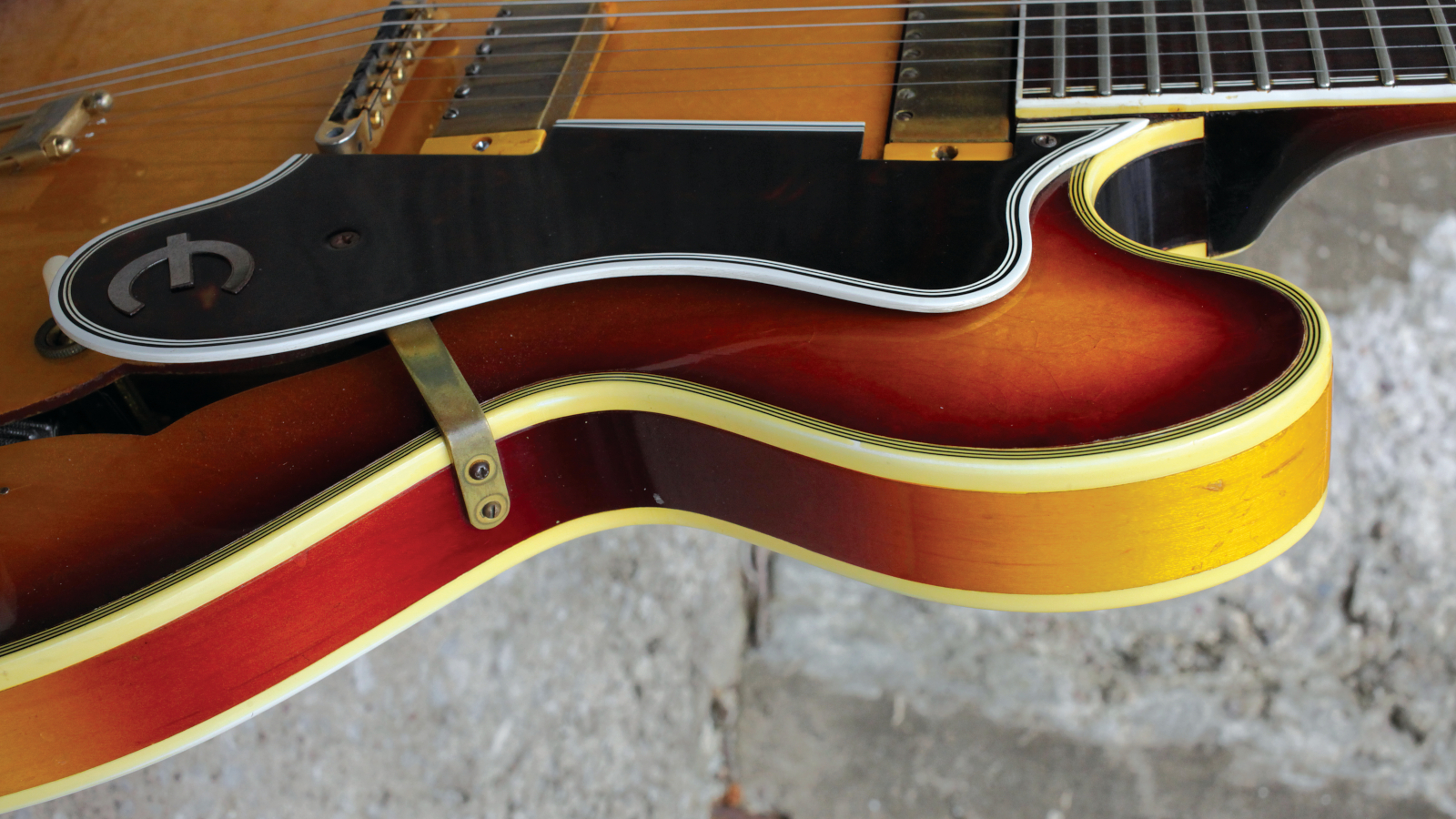
The woods used for this Sheraton also display a lovely, subtle flamed grain, and the guitar’s lusciously rich “iced tea” sunburst finish continues around the rims, something not seen on its Gibson cousins.
The neck profile is also different from anything found on a Gibson of the era, a distinct “V” shape that owner James Youngjohns says is closer to shapes he has found on 1930s Gibson acoustic guitars.
Other distinctly Epiphone details include the pre-Gibson radio knobs, the elongated pickguard with “E” inlay and the two-tiered Frequensator trapeze tailpiece. The latter was a feature of many of the company’s big pre-Gibson archtops, boasted of in promotional literature, and intended to balance out the tension of the bass and treble strings across the bridge. (Note that the bridge currently on this one is a replacement.)
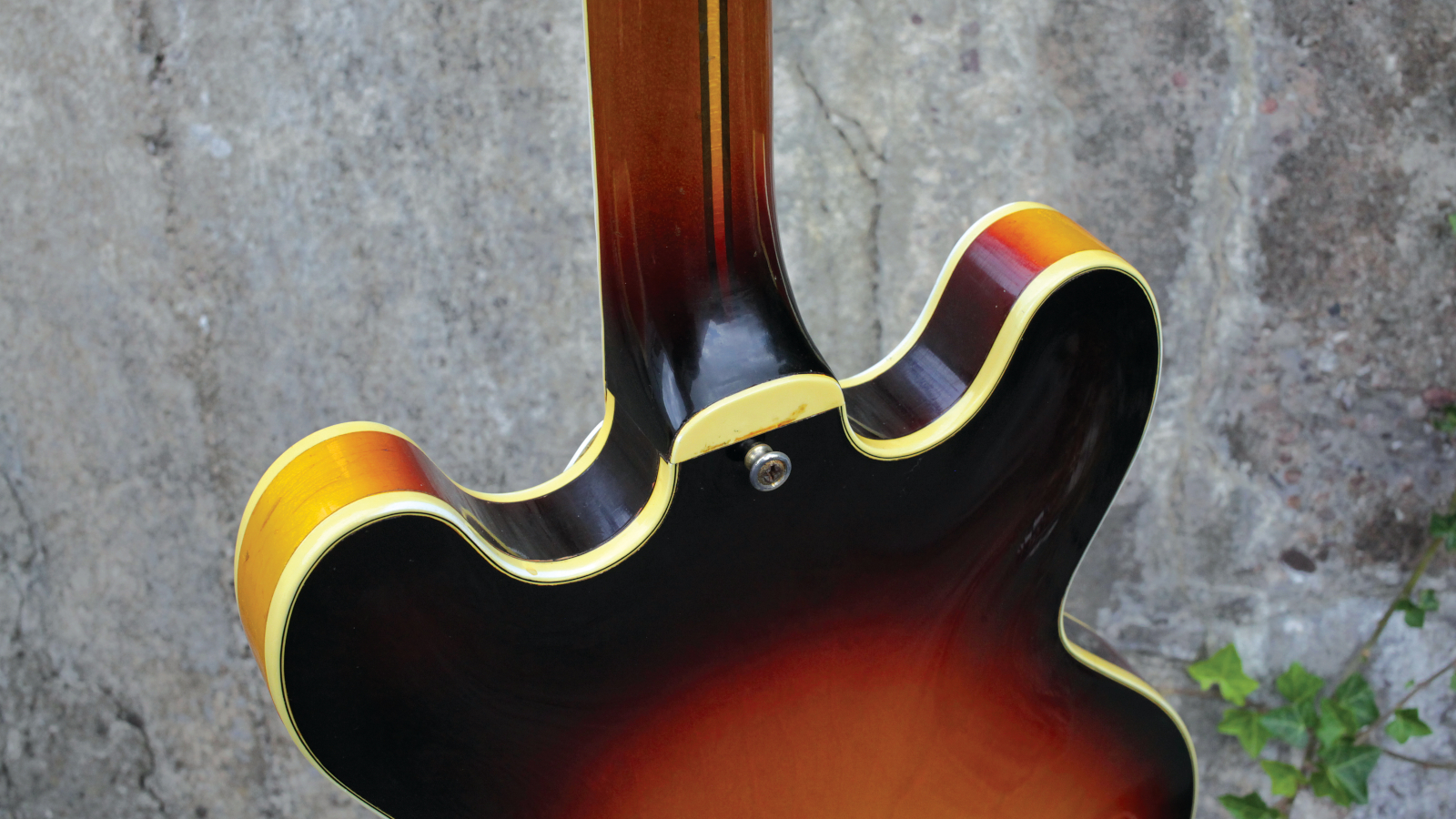
Of all the distinctive components in evidence here, though, the pickups might just stand out the most, and obviously have the greatest impact on the Sheraton’s unique voice.
Dubbed NY, for New York, they are also leftovers from Epiphone’s independent years. While often mistaken for early mini-humbuckers, they are actually single-coil units.
“They’re fairly low-output relative to Gibson’s P-90s of the time,” Youngjohns says, “but they’re very clear and articulate. The closest comparison I could make is gold-foils, particularly in the treble response, although they also have quite a full bass.
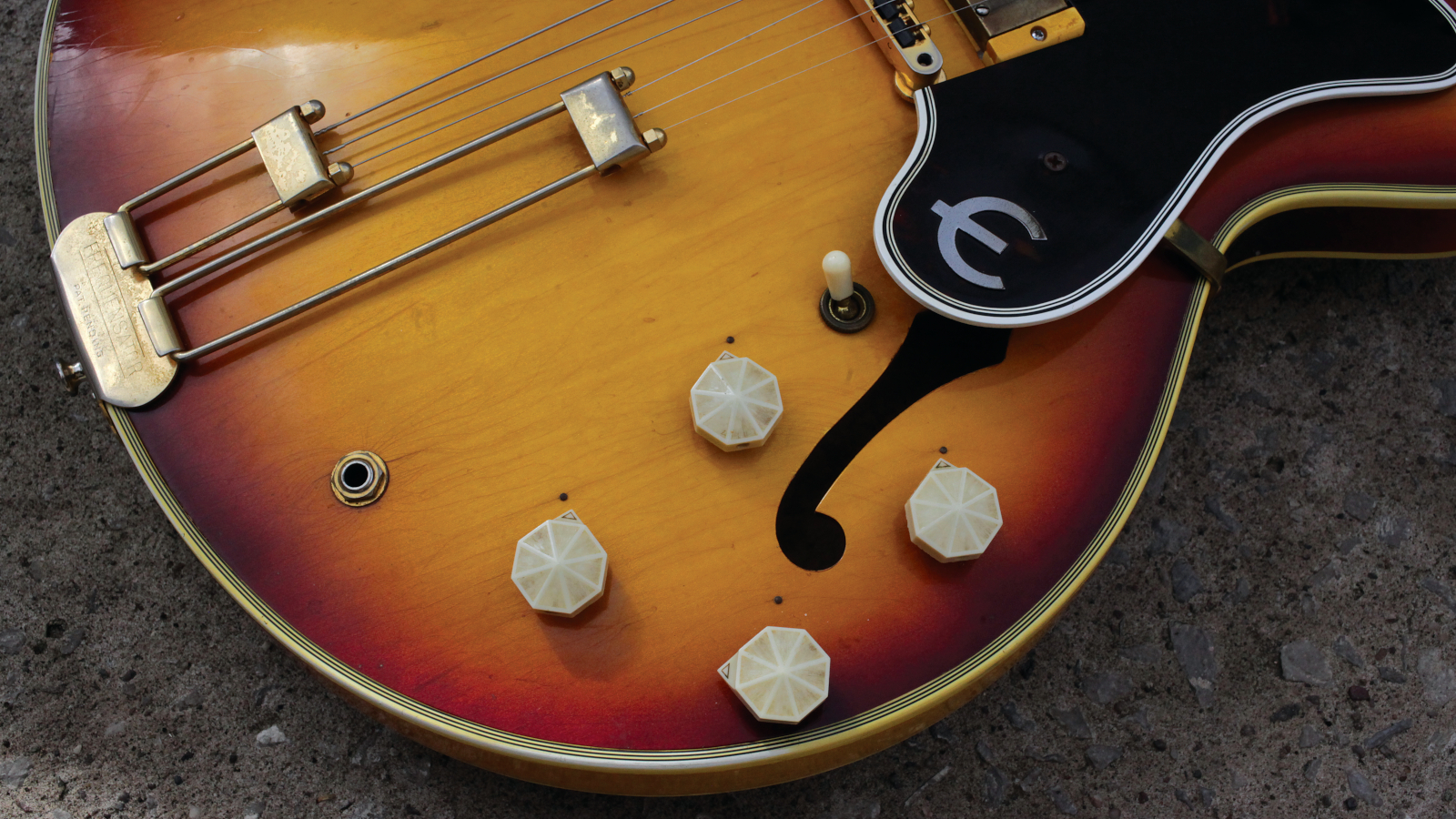
“It’s very easy to re-create that 1950s Barney Kessel sound you hear on recordings such as Julie London’s ‘Cry Me a River’ using the neck pickup into an old tube amp.
“The New York pickups were quickly dismissed by the rock crowd, as they weren’t going to push an amp into breakup the way a humbucker or even a P-90 would,” Youngjohns adds. “But if you use pedals to do the heavy lifting, the NYs work really well for higher-gain music styles.
“Playing a modern indie/alternative repertoire on it, the Sheraton has a lovely top-end sparkle, and it retains far better individual note clarity than an ES-335 with similar gain. It’s a really interesting variant on the 335 sound, and the special sauce is definitely the pickups.”
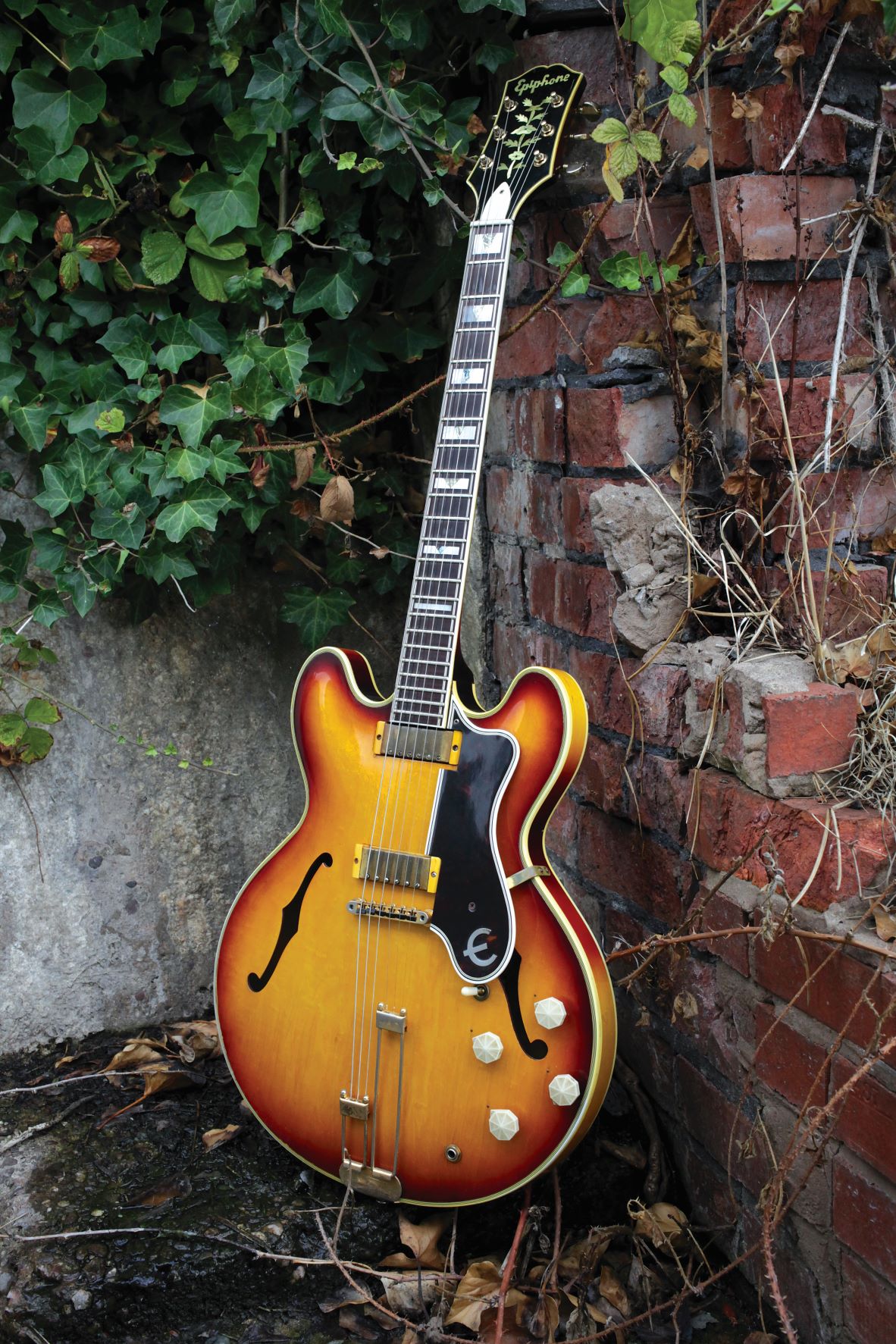
In 1960 or early ’61, Gibson replaced the Sheraton’s leftover NY single-coils with its own mini-humbuckers.
These are the guitars seen far more frequently through the years, as played by artists from John Lee Hooker to Noel Gallagher to Vampire Weekend’s Ezra Koenig.
Gibson shipping records from the era show that only 46 Sheratons were made in 1959 and a further 26 in 1960, so it’s no wonder the seminal early configuration is rarely seen today.
ESSENTIAL INGREDIENTS
- Semi-hollow thinline archtop body
- Laminated maple top, back and sides
- Five-piece neck with bound ebony fingerboard, 24.75-inch scale
- Split-V block inlays
- Frequensator trapeze tailpiece
- Dual New York single-coil pickups
Guitar Player would like to thank James Youngjohns for showing us this incredible guitar.
Dave Hunter is a writer and consulting editor for Guitar Player magazine. His prolific output as author includes Fender 75 Years, The Guitar Amp Handbook, The British Amp Invasion, Ultimate Star Guitars, Guitar Effects Pedals, The Guitar Pickup Handbook, The Fender Telecaster and several other titles. Hunter is a former editor of The Guitar Magazine (UK), and a contributor to Vintage Guitar, Premier Guitar, The Connoisseur and other publications. A contributing essayist to the United States Library of Congress National Recording Preservation Board’s Permanent Archive, he lives in Kittery, ME, with his wife and their two children and fronts the bands A Different Engine and The Stereo Field.

